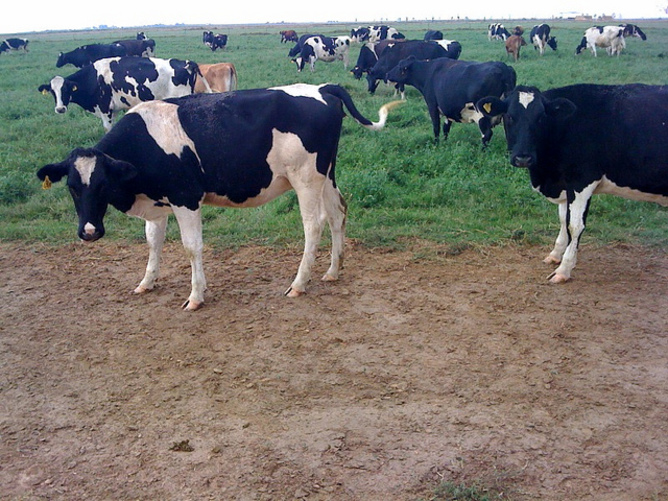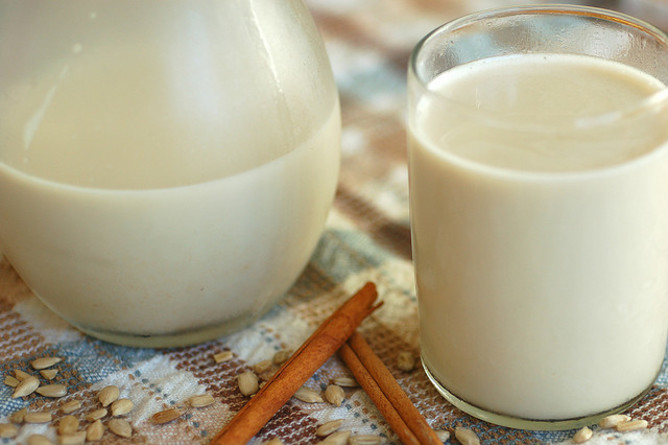There is no evidence that the health benefits of milk are compromised by pasteurisation. jacqueline/Flickr, CC BY-NC
Milk is a highly nutritious food, and an important source of amino acids and minerals such as phosphorus and calcium, which contributes to bone health.
Historically, milk was prone to contamination by bacteria from cows that could cause severe illness in humans. This remains the case with raw (unpasteurised) milk. The tragic death of a Victorian toddler this week is a stark reminder of these risks.
Pasteurisation involves heating the product to 72°C for 15 seconds. The method was originally employed to destroy bacteria in wine and beer that caused these products to spoil. It was quickly realised that this process could also be applied to milk to destroy harmful bacteria, and make milk safer for human consumption.
Pasteurisation was first introduced in Australia in the late 1950s and remains a legal requirement for milk produced for human consumption in Australia.
Nowadays, some of the important bacteria that pasteurisation targeted, such as those that cause tuberculosis, are no longer as problematic. So why do we continue to pasteurise milk?
The animals we use for milking can sometimes carry other pathogenic organisms that are capable of causing disease in humans. They can be found on hides or shed in the faeces.
Even healthy animals may be a source of organisms that are harmful to people. Such pathogens may be present in the farm environment, including soil, water, on pasture and in animal feeds. These pathogens can enter the milk during milking and if such milk is consumed, it can cause disease.
The most common pathogens found in association with dairy farms and milking animals include bacteria such as Escherichia coli (E. coli), Campylobacter and Salmonella, but other pathogens such as parasites like Cryptosporidium, a type of gastro, may also be present.

As soon as milk is secreted from the udder, it is at risk of contamination by many different bacteria.
cheeseslave/Flickr, CC BY
Campylobacter and Salmonella can cause severe diarrhoea and certain types of E. coli, particularly those known as Shiga toxin-producing E. coli (STEC), can cause very severe disease which impairs kidney function and may result in death.
Milk is highly nutritious to bacteria. Bacteria can quickly proliferate if their growth is not inhibited. Stopping the growth of bacteria in milk requires either heating to kill the bacteria, or chilling, which will not kill the bacteria but will slow down their growth.
E. coli, for instance, can go from ten cells to 100 million cells in just over six hours at 30°C. Only ten cells may be required to make someone ill. If such an organism is likely to be present, it’s important that any potential growth is stopped.
These harmful bacteria have caused outbreaks and disease associated with the consumption of raw milk in many countries. Data from the United States indicates that over a 13 year period to 2011, there were 2,384 illnesses, 284 hospitalisations and two deaths associated with the consumption of raw milk.
In Australia, raw milk contaminated by bacteria such as Campylobacter and Salmonella caused at least nine outbreaks of disease between 1997 and 2008, leading to 117 cases of illness.
So why do people choose to drink raw milk?
Advocates of raw milk often claim improved health benefit and nutritional value, or desiring a product which has not undergone further processing, retaining bacteria naturally present in milk.
But there is no evidence that the health benefits of milk are compromised by pasteurisation.
The defining difference between pasteurised and raw milk is the bacteria that are present. As soon as milk is secreted from the udder, it is at risk of contamination by many different bacteria as it makes its journey to our table. This includes harmful bacteria. These bacteria can lead to severe illness in humans, particularly children and the elderly.
For these reasons, raw milk continues to have a far higher risk of causing illness. Pasteurisation remains an important step in ensuring we can continue to enjoy safer, nutritious milk.
Further reading: Bath milk crisis must prompt better cosmetic safety regulation
This article was originally published on The Conversation.
Read the original article.



19th December 2014 at 7:01 pm
I assume the only reason for this story is to push a ban on raw milk that currently CAN legally be bought as a bathing treatment.
The provided statistics are staggering, in that they are so small, compared to say sushi, or salads.
I am sure the CSIRO does a lot of great and honest science, but I would absolutely love to know who really worked this ‘story’ up.
“But there is no evidence that the health benefits of milk are compromised by pasteurisation.”
It is wonderful for the promotion of healthy teeth and gums and the work of Western Price attests to this. His study of indigenous species and dental health is unsurpassed.
I tell you one thing though. Something invented BY the CSIRO, IS going to adversely affect more people in the world that you can count, albeit over time.
WiFi.
Of course there is ‘no’ evidence of that either, is there.
And of course no safety data either. You know – something like “Whats the actual safe limit for radiation exposure from WiFi in children per day’.
19th December 2014 at 7:18 pm
This may be of interest regarding the benefits of Raw Milk over more highly processed forms.. http://www.raw-milk-facts.com/raw_milk_health_benefits.html
17th December 2014 at 10:29 am
I agree completely that the sale of raw (unpasteurised) milk & cheese should be banned in Australia. The human toll from tuberculosis was incredible, to say nothing of the cost of it’s eradication from our farm animals. It is interesting, however, that raw milk is bactericidal ( & spermicidal) to an extent. Unfortunately, it is not sufficiently bactericidal to cope with large loads of bacteria
16th December 2014 at 1:16 pm
If you are interested in the story behind the pasteurisation of milk then read:
The Untold Story of Milk, Revised and Updated: The History, Politics and Science of Nature’s Perfect Food: Raw Milk from Pasture-Fed Cows Paperback – March 16, 2009
by Ron Schmid (Author)
15th December 2014 at 10:19 pm
200 illnesses/year from raw milk is propaganda unless you state population e.g. the American study [should give the ref] gives about 1/10,000 head of population. True, it is an added risk but it seems there are higher priority things to work on e.g what are the long term likely effects of all the bactericides flooding the market? Even hospitals have anti-bacterial wipes everywhere.
Incidentally, obviously pasteurisation is a far call from sterilisation, so when will pathogenic microorganisms, that may find their way into milk. survive 72oC?
On a totally different matter, why did gamma irradiation become unfashionable?
15th December 2014 at 2:31 am
Let’s see, smoking cigarettes, we know they are bad for health, but they are legal and as an adult if you want to smoke, you can. Alcohol, it’s legal, sushi, yep legal, a rare steak, perfectly legal. Raw milk oh dear, we can’t have anyone drinking that. If you want milk, you have to drink the foreign owned processed stuff.
Yeah stuff that, I buy mine from a delivery truck, it comes from a farm outside Sydney. I pay good money, but it tastes excellent. I don’t smoke or drink or gamble, view adult sex material or any of those other legal things. My crime is not supporting big dairy. Lol